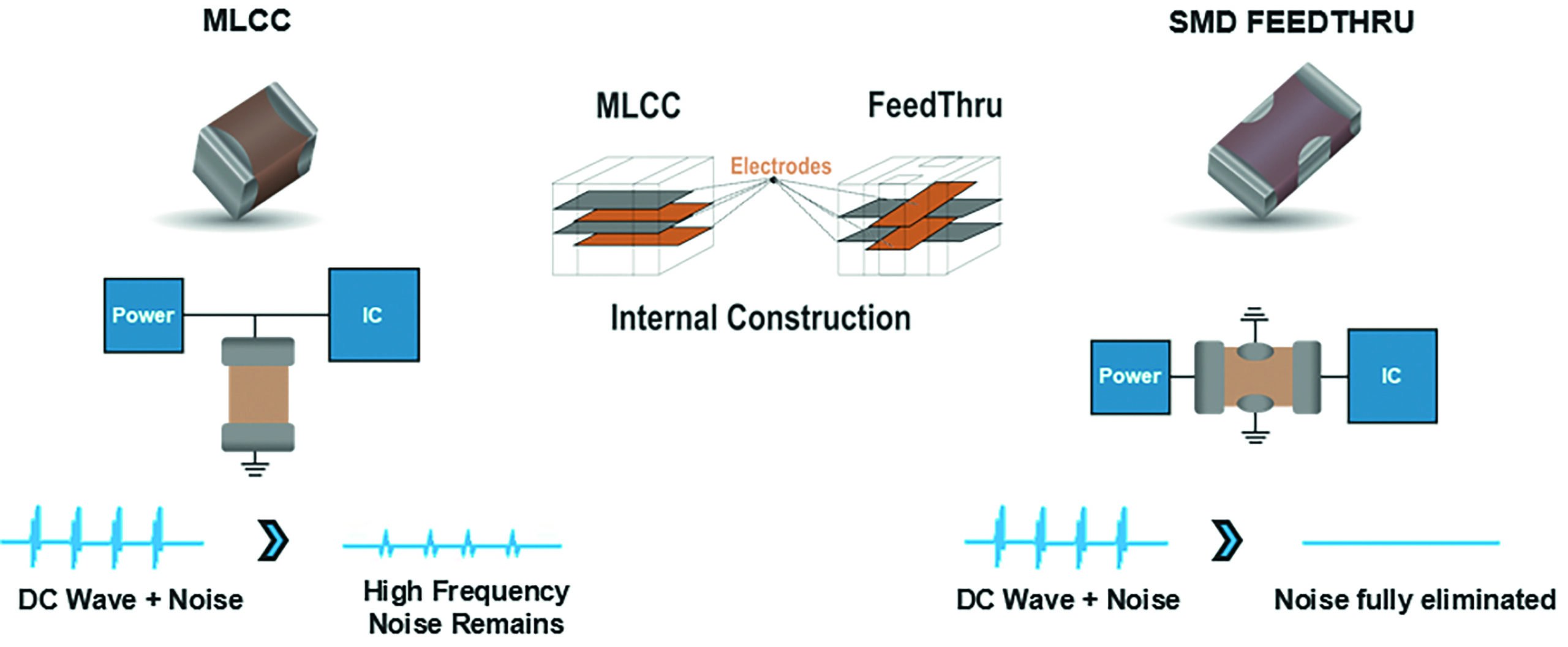In addition to digital signal processing (DSP), feedthru capacitors provide a great solution for power line conditioning, high dI/dt environments, and voltage regulators to name just a few applications.
As wearables, remote monitoring, and discrete IoT nodes become prevalent, the issue of EMI (electromagnetic interference) also becomes more common in these small circuits. These electronics typically have sensors on an analog circuit and—if digital processing is needed—feedthru capacitors offer an ideal, small and easy-to-implement single component EMI filtering solution.
In addition, digital-to-RF interfaces provides another example where filtering is needed. EMI filters can be achieved in many shapes and sizes, but it is not intuitive to know how performance is achieved with these small form-factor devices and this topic is worth talking about.
Feedthru capacitors are made from the same materials—and employ the same processing and manufacturing technologies—as do multi-layer ceramic capacitors (MLCCs), but they differ in their electrode design and terminations.
Feedthru capacitors are also called SMDs (surface mount devices), EMI filters, or three-terminal capacitors because they have Input/Output and Ground terminations. If we compare the internal construction and typical layout of MLCCs and feedthru capacitors, we see that they both have filtering capability, but the feedthrus do this much more efficiently and across a broader spectrum of frequency.
A series inductance is purposely introduced on feedthru designs, and the parallel capacitance makes for an efficient LC-T filter. The benefit of using an MLCC form factor is that MLCC manufacturing is well established and advanced, constantly undergoing innovation, and this technology is well-suited for very small designs.
EIA 0402 size feedthru capacitors are easily realizable with up to 15uF of capacitance and 2A current handling, as exhibited by devices from the KNH series of feedthru capacitors from Kyocera-AVX.
This enables effective analog and digital isolation for size-constrained and compact circuits. This replaces larger filter capacitor banks or discrete LC filters; it also provides more consistent performance than filters using ferrite beads. Attenuation characteristics are also consistent from part-to-part and lot-to-lot thanks to MLCC innovations. These devices typically have low voltage ratings, but they trend well along with ICs that commonly have lower voltage ratings and higher
dI/dt requirements.
In addition to digital signal processing (DSP), feedthru capacitors provide a great solution for power line conditioning, high
dI/dt environments, and voltage regulators to name just a few applications. When designs are size-limited, it becomes apparent how well these passive components fit in and facilitate high performance of active ICs in wearables.

